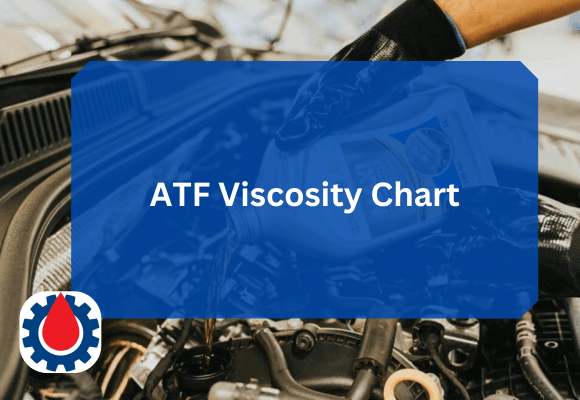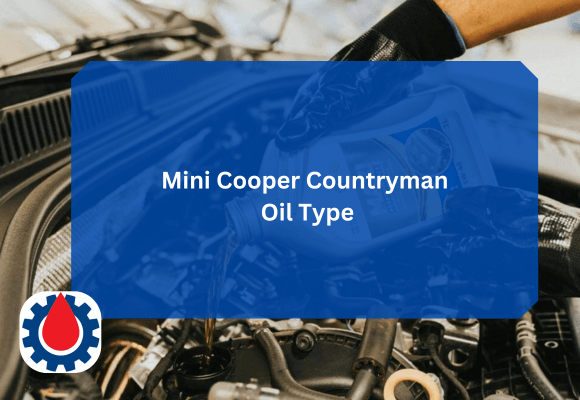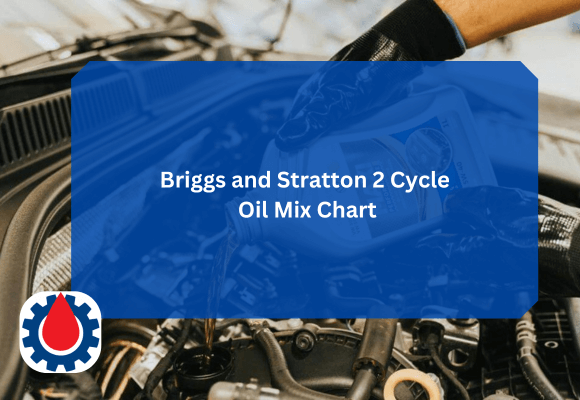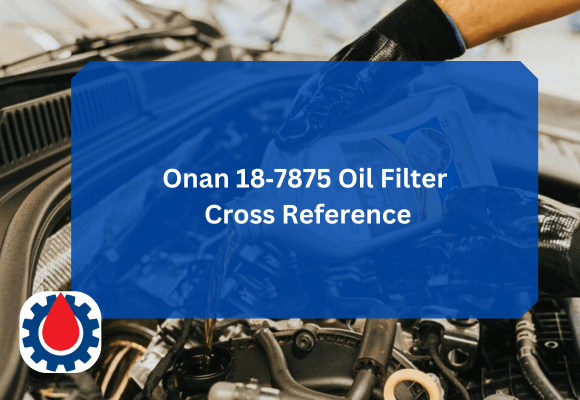One of the most critical characteristics of ATF is its viscosity, which refers to how thick or thin the fluid is under various temperature conditions. Understanding the ATF viscosity chart can help you choose the right fluid for your car and maintain transmission performance and longevity.
ATF Viscosity Chart
| ATF Type | Viscosity @ 40°C (cSt) | Viscosity @ 100°C (cSt) | Viscosity Index (VI) | Pour Point (°C) | Typical Application |
|---|---|---|---|---|---|
| Dexron III / Mercon | 34.0 – 38.0 | 7.0 – 7.5 | 180 – 190 | -45 | Older GM, Ford, and Asian vehicles |
| Dexron VI | 29.0 – 31.0 | 6.0 – 6.4 | 200 – 210 | -48 | Modern GM vehicles; backward compatible with Dexron III |
| Mercon LV | 25.0 – 28.0 | 5.5 – 5.9 | 200 – 210 | -50 | Late-model Ford vehicles (6-speed and up) |
| Mercon V | 33.0 – 36.0 | 7.0 – 7.5 | 190 – 200 | -45 | Ford 4-speed transmissions and some imports |
| ATF+4 (Chrysler) | 30.0 – 34.0 | 7.0 – 7.3 | 195 – 205 | -48 | Chrysler, Dodge, Jeep automatic transmissions |
| Toyota WS (World Standard) | 24.0 – 26.0 | 5.5 – 5.8 | 210 – 220 | -50 | Toyota, Lexus late-model transmissions |
| Honda ATF DW-1 | 28.0 – 30.0 | 6.8 – 7.0 | 200 – 210 | -45 | Honda, Acura automatic transmissions |
| Nissan Matic S | 27.0 – 30.0 | 6.0 – 6.4 | 200 – 210 | -46 | Nissan, Infiniti 5–7 speed automatics |
| ZF Lifeguard Fluid 8 | 22.0 – 24.0 | 5.4 – 5.7 | 210 – 220 | -51 | ZF 8-speed transmissions (BMW, Audi, Jaguar) |
| CVT Fluid (Typical) | 32.0 – 35.0 | 6.8 – 7.2 | 190 – 200 | -48 | Continuously Variable Transmissions |
| Dual-Clutch (DCT) Fluid | 35.0 – 38.0 | 7.5 – 8.0 | 180 – 190 | -40 | DCT transmissions (VW DSG, Ford PowerShift) |
| Allison TES-295 (HD ATF) | 36.0 – 39.0 | 7.2 – 7.6 | 190 – 200 | -42 | Heavy-duty trucks and buses |
| Synthetic Multi-Vehicle ATF | 30.0 – 34.0 | 6.8 – 7.2 | 200 – 210 | -48 | Compatible with most modern transmissions |
| CVT Green 2 (Subaru/Nissan) | 26.0 – 28.0 | 5.9 – 6.1 | 210 | -50 | Subaru, Nissan CVT systems |
| Hyundai SP-IV / Kia SP-IV | 25.0 – 27.0 | 5.7 – 6.0 | 210 | -50 | Hyundai and Kia modern automatics |
| ATF SP-III | 33.0 – 36.0 | 6.9 – 7.3 | 190 – 200 | -46 | Older Hyundai, Kia, Mitsubishi automatics |
| Mazda ATF M-V | 29.0 – 32.0 | 6.5 – 7.0 | 195 – 205 | -47 | Mazda automatic transmissions |
| Toyota Type T-IV | 32.0 – 35.0 | 7.0 – 7.4 | 190 – 200 | -45 | Older Toyota, Lexus automatic transmissions |
| Volkswagen G 055 025 (ATF) | 28.0 – 31.0 | 6.2 – 6.6 | 200 – 210 | -48 | VW, Audi 6-speed automatics |
| BMW ATF 6 | 24.0 – 27.0 | 5.6 – 6.0 | 210 – 220 | -50 | BMW 6-speed and some 8-speed transmissions |
| Mercedes-Benz ATF 134 | 26.0 – 29.0 | 5.8 – 6.2 | 205 – 215 | -49 | Mercedes-Benz 7-speed automatics |
| JASO 1A-LV (Low Viscosity) | 23.0 – 26.0 | 5.4 – 5.8 | 210 – 220 | -50 | Low-viscosity Japanese and Asian automatics |
| Mitsubishi DiaQueen ATF J3 | 27.0 – 30.0 | 6.0 – 6.4 | 200 – 210 | -48 | Mitsubishi modern automatics |
| Volvo ATF 6-Speed | 29.0 – 32.0 | 6.5 – 6.9 | 195 – 205 | -47 | Volvo 6-speed automatic transmissions |
| Aisin Warner AW-1 | 25.0 – 28.0 | 5.7 – 6.1 | 210 – 220 | -50 | Aisin transmissions in various Asian vehicles |
| ZF Lifeguard Fluid 6 | 28.0 – 31.0 | 6.3 – 6.7 | 200 – 210 | -48 | ZF 6-speed transmissions (BMW, Audi, Land Rover) |
| Honda ATF-Z1 | 30.0 – 33.0 | 6.9 – 7.2 | 190 – 200 | -45 | Older Honda, Acura automatic transmissions |
| Nissan Matic J | 29.0 – 32.0 | 6.4 – 6.8 | 195 – 205 | -47 | Older Nissan, Infiniti automatics |
| Toyota Type T-III | 33.0 – 36.0 | 7.1 – 7.5 | 185 – 195 | -44 | Early Toyota, Lexus automatic transmissions |
| Mercedes-Benz ATF 236.15 | 23.0 – 26.0 | 5.5 – 5.9 | 210 – 220 | -51 | Mercedes-Benz 9-speed automatics |
| Subaru ATF-HP | 27.0 – 30.0 | 6.1 – 6.5 | 200 – 210 | -48 | Subaru high-performance automatics |
| Chrysler ATF+3 | 32.0 – 35.0 | 7.0 – 7.4 | 190 – 200 | -46 | Older Chrysler, Dodge, Jeep automatics |
| JWS 3309 (Aisin ATF) | 28.0 – 31.0 | 6.2 – 6.6 | 200 – 210 | -48 | Aisin transmissions (Volvo, Saab, some Toyota) |
| Ford Mercon SP | 27.0 – 30.0 | 6.0 – 6.4 | 200 – 210 | -48 | Ford 6-speed automatics (select models) |
| Porsche ATF (ZF 9HP) | 24.0 – 27.0 | 5.6 – 6.0 | 210 – 220 | -50 | Porsche 8- and 9-speed ZF transmissions |
Related Valvoline MaxLife ATF Compatibility Chart(For All Vehicle Brands)
What Does ATF Viscosity Mean?
Viscosity refers to a fluid’s resistance to flow. In simple terms, a high viscosity fluid is thicker and flows more slowly, while a low viscosity fluid is thinner and flows easily. ATF viscosity changes with temperature, it thickens in cold conditions and thins when hot. The goal is to maintain optimal fluidity across temperature ranges to ensure consistent lubrication, cooling, and performance.
The viscosity index (VI) measures how stable the fluid’s viscosity remains over a range of temperatures. A higher VI indicates better stability and less thickening in cold or thinning in heat.
Why Viscosity Matters in ATF
1. Smooth Shifting:
Proper viscosity ensures hydraulic pressure is maintained for smooth and precise gear shifts.
2. Transmission Protection:
Correct thickness minimizes metal-to-metal contact and prevents wear.
3. Cold Start Performance:
A lower viscosity at cold temperatures allows for quick fluid circulation and easier starting.
4. Fuel Efficiency:
Low-viscosity ATFs reduce drag and improve efficiency.
5. Compatibility:
Using the wrong viscosity can cause slippage, overheating, and transmission damage.
Related ATF Oil Suitable for Power Steering(Top 4 Best ATF Picks)
Choosing the Right ATF
Each manufacturer specifies a particular ATF formulation to match their transmission design. Always check the owner’s manual or the label on the dipstick to determine which fluid your vehicle requires.
Using a universal or synthetic ATF that meets your vehicle’s specifications can help maintain performance while extending fluid life.
Modern vehicles tend to use low-viscosity synthetic ATFs, such as Dexron VI, Mercon LV, or Toyota WS, to improve fuel economy and shifting smoothness. Older models might still require higher-viscosity fluids like Dexron III or Mercon V.
ATF Viscosity vs Engine Oil Viscosity
While both engine oil and ATF have viscosity ratings, ATF operates under different conditions. It must flow quickly in hydraulic circuits, maintain friction characteristics for clutch engagement, and resist oxidation. That’s why ATFs generally have a lower viscosity range and higher stability than engine oils.
Related Nissan ATF D3M Equivalent(Top 5 Best Equivalent 2025)
Temperature and Viscosity Relationship
Maintaining Correct Viscosity
- Use the manufacturer-recommended ATF for your transmission type.
- Avoid mixing different ATF brands or types unless specified as compatible.
- Check fluid levels regularly to prevent overheating and slippage.
- Replace ATF at recommended intervals to maintain viscosity stability and performance.
- Monitor for discoloration or a burning smell, signs that viscosity and additives have broken down.
FAQs
What is the viscosity of ATF fluid?
The viscosity of most ATF fluids ranges between 25–40 cSt at 40°C and 5.5–7.5 cSt at 100°C, depending on the formulation and manufacturer. Low-viscosity synthetic ATFs like Dexron VI or Mercon LV flow more easily, while traditional fluids like Dexron III are slightly thicker, offering stronger film protection in older transmissions.
What is the viscosity of Dexron 4?
Dexron IV ATF typically has a viscosity of around 30–33 cSt at 40°C and 6.5–6.9 cSt at 100°C with a viscosity index near 200. It is thinner and more temperature-stable than Dexron III, allowing smoother shifting and better cold-weather performance. However, Dexron IV has been largely replaced by Dexron VI in modern vehicles.
Related Where to Buy The Proper BMW Coolant(5 Legit Places)
How thick should transmission fluid be?
Transmission fluid should have a balanced thickness, thin enough to circulate quickly during cold starts but thick enough to provide lubrication under load. At operating temperature (100°C), ideal ATF viscosity falls between 6.0 and 7.5 cSt, ensuring both efficient flow and film strength for gear protection.
What is the difference between low viscosity and high viscosity ATF?
Low-viscosity ATFs (like Dexron VI, Mercon LV, or Toyota WS) are thinner and designed for modern transmissions that prioritize fuel efficiency and faster hydraulic response.
High-viscosity ATFs (like Dexron III or Mercon V) are thicker, offering more protection but may reduce efficiency. Using the wrong viscosity can lead to poor shifting, overheating, or even damage to transmission components.
Related Dexron II Equivalent(Top 5 BEST Equivalent 2025)
What viscosity is Mobil 1 ATF?
Mobil 1 Synthetic ATF has a viscosity of about 36.3 cSt at 40°C and 7.4 cSt at 100°C, with a viscosity index of around 176. This ensures excellent performance across temperatures, providing quick lubrication during cold starts and maintaining film strength under high thermal stress. It’s suitable for a wide range of automatic transmissions requiring Dexron III, Mercon, or multi-vehicle ATF specifications.




